This is part of a series on ASEAN countries. Cambodia’s long and rich history has been marked by periods of stunning achievement and times of profound cruelty and destruction. The editorial team of our sister product, The Expat magazine, peers into this ASEAN nation – one with a turbulent and often painful history – and finds in its people a surprising and steady optimism.
Cambodia is an enigma for many reasons. Its people and culture are both as open and accessible to the initiated traveller as any in the region, but the country is unquestionably still burdened by reminders of the horrors of its recent past. Many people cannot even hear the name of the country without thinking of the genocidal campaign that saw fully a quarter of Cambodia’s entire population wiped out in the 1970s, or the civil wars that ravaged the countryside and left a bitter legacy of landmines and lives ruined years after the fighting had ended.
Cambodia has struggled mightily to find its footing, and that struggle continues today. Of the 10 ASEAN member states, Cambodia is dead last in GDP per capita, measurably behind even Laos and Myanmar, and barely a tenth that of Malaysia. Corruption is rampant, hunger is widespread, human development is the second-lowest in ASEAN, and the rule of law is almost a mirage, with the country in 2015 placing 99th overall out of 102 countries ranked. But there are signs of progress, and the people of Cambodia – who would certainly have every reason to feel hopeless and miserable – are often praised by visitors for their smiles and warmth, an abiding optimism that belies the difficult lives many of these people lead.
Kingdom of wonder
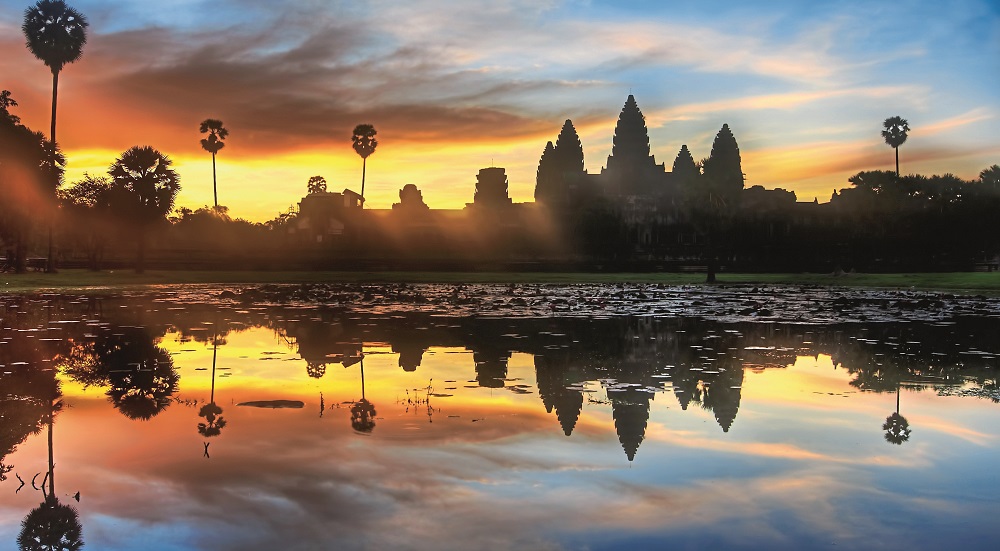
The earliest beginnings of Cambodia can be traced – though inconclusively – as far back as around 6000 BCE. More solid archaeological findings support human occupation from approximately the third millennium BCE, with Iron Age settlements being found throughout the area dating back to 500 BCE. Over the next millennium, settlements came and went, and minor empires rose and fell, the Funan and Chenla prominent among them. From these kingdoms, the dominant power of the time coalesced.
The Khmer Empire, which would become the largest and strongest in Southeast Asian history, was firmly established in 802, when Jayavarman II declared Khmer independence from Java and proclaimed himself as devaraja, a “god-king” designation transcending a mere mortal monarchy. Jayavarman II reigned over the empire from 790 to 850 and set it on a path of unimagined glory.
For some 600 years, the Khmer Empire controlled vast swaths of territory in present-day Cambodia, Vietnam, Thailand, and Laos. The golden age, lasting from the 9th to 13th centuries, saw the construction of magnificent palaces and temples all over the territory, most notably the capital city of Angkor, the seat of Khmer power, located just outside present-day Siem Reap.
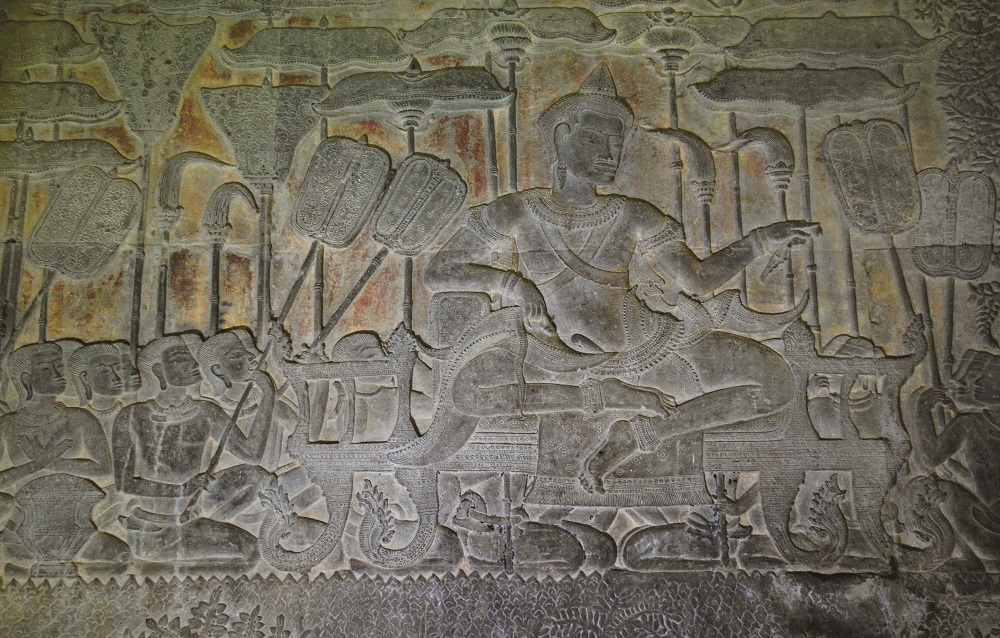
These architectural masterpieces – originally numbering in the hundreds – were spread over a vast 1,000-sq km area that was, in 2007, determined to have been home to by far the largest preindustrial city in history, larger than modern-day Paris and supporting perhaps as many as a million people.
The temples of Angkor showcase the sheer genius of the Khmer Empire, using technology, water storage and dispersal methods, and construction techniques all considerably ahead of its time. The scale, the grandeur, the details and finesse, and the impressive feat of transporting millions of stones – many weighing over 1,000kg – from distant quarries ensures that the ancient temples of Angkor leave an impression today matched by few archaeological sites anywhere on Earth.
After Angkor: The dark ages
The golden age of the Khmer Empire, however, declined in the 13th and 14th centuries, and took an abrupt turn for the worse in 1431 when Angkor was sacked by neighbouring Ayutthaya. The 15th through 19th centuries were marked by territorial and monetary losses due to the growing power of neighbouring empires in Siam and Vietnam. The Vietnamese Empire annexed much of Cambodia’s most prosperous areas, and their settlement of the Mekong Delta cut Cambodia off from the sea, resulting in massive losses from the lack of trade.
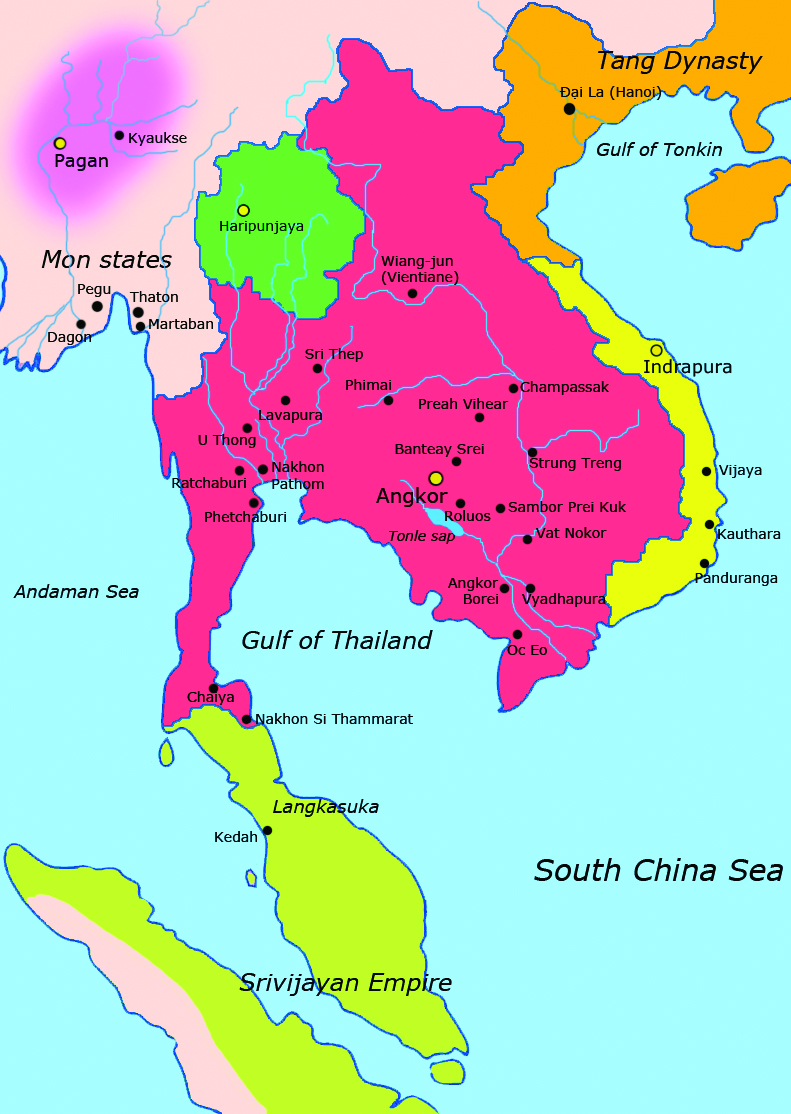
This period came to be known as the dark ages of Cambodia. Phnom Penh was established as the capital with the founding of the city by King Ponhea Yat in 1434, but later relocated to Angkor, then Lovek, then Oudang.
Four hundred years after its founding, the capital was returned to Phnom Penh by King Norodom the First, who came into power in 1834. King Norodom negotiated a deal with France for Cambodia to become a protectorate in hopes of saving his country from further decline and to protect itself from its increasingly powerful neighbours.
In 1863, Cambodia became part of French Indochina, and remained a self-governing protectorate for 90 years, with only a brief interruption of Japanese occupation during World War II.
The weak Vichy government in France during World War II left Cambodia in a dire situation: without any real protection. During this time, Thai Field Marshal Phibunsongkhram took advantage of the unprotected colony and invaded the western provinces. Cambodia gained independence in 1953 with the rest of French Indochina in part through the Geneva Accords, the bankrupt French government, and the strong will and negotiating skills of Prince Norodom Sihanouk, who later became king, then the country’s first Prime Minister, and later, the king once again.
During the Vietnam War, Sihanouk allowed Cambodia to be a haven and supply route for the Northern Vietnamese communists, leading to secret bombings by the United States in Cambodia. When being interviewed by The Washington Post in 1967, Sihanouk stated that he would not oppose American involvement in Cambodia so long as the bombing campaign targeted the Vietnamese, and not Cambodians. However, the U.S. incursions directly and indirectly lead to the deaths of tens of thousands of innocent Cambodians. This was, sadly, but a shadow of the horrors yet to be endured by the country.
Cambodian genocide and civil war
In 1970, while Sihanouk was on a diplomatic visit to Beijing, the anti-Communist Prime Minister Lon Nol lead the army in a bloodless coup d’état with the help of the Americans. In exile in China, Sihanouk urged his followers to oppose Lon Nol’s corrupt and incompetent regime, which lead to the rise of the Cambodian Communist Party, now known as the Khmer Rouge, or Red Khmer.
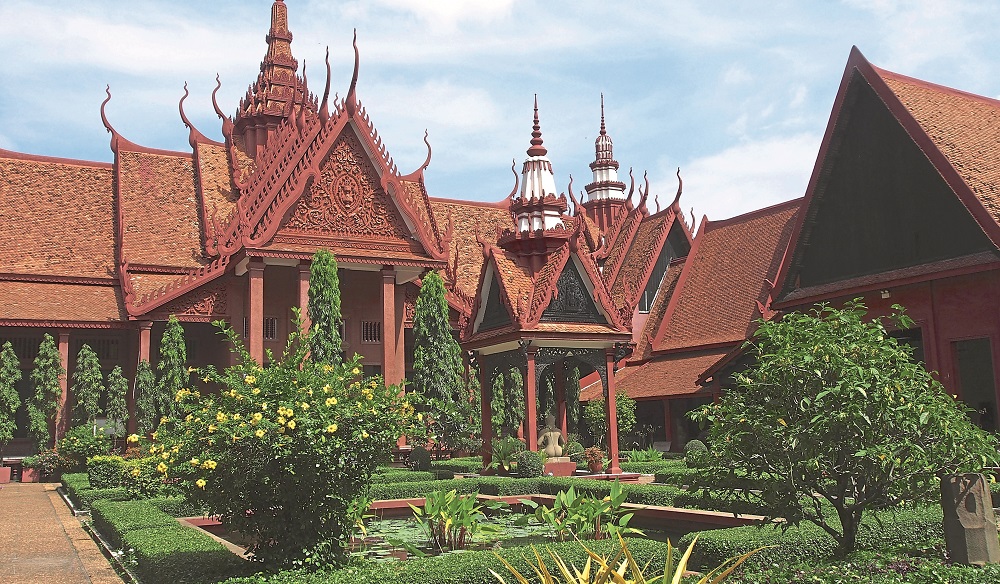
The Khmer Rouge took over the country in 1975, greeted by cheers from people eager for stability. These cheers soon fell silent under the ruthless leadership of Pol Pot, as the Khmer Rouge took Cambodia back to the Stone Age, implementing an anti-intellectual campaign, killing anyone with any form of education and destroying anything related to religion or Western thinking.
In search of a utopian and agrarian state, Pol Pot and his army abolished money, religion, and all forms of private property; everyone worked in large, rural labour camps, where food was scarce. The Khmer Rouge banned by proclamation the very existence of ethnic Chinese, Vietnamese, Thai, Buddhist monks, and Muslim Cham, along with 18 other minority groups, and the massacre began and continued in earnest for over three years. The resulting campaign has been described as “the worst disaster to befall any ethnic Chinese community in Southeast Asia.”
Estimates vary, but it’s generally accepted that at least two million people died during the three-year rule of the Khmer Rouge, representing – staggeringly – a quarter of Cambodia’s then-population of eight million and standing as one of the bleakest horrors in modern human history. Many of these deaths came from starvation and exhaustion, but up to a million and a half people were killed by execution at notorious places such as the “Killing Fields” and S-21 (Tuol Sleng) Prison. Monks in particular were massacred en masse, with only 800 to 1,000 surviving out of some 60,000.
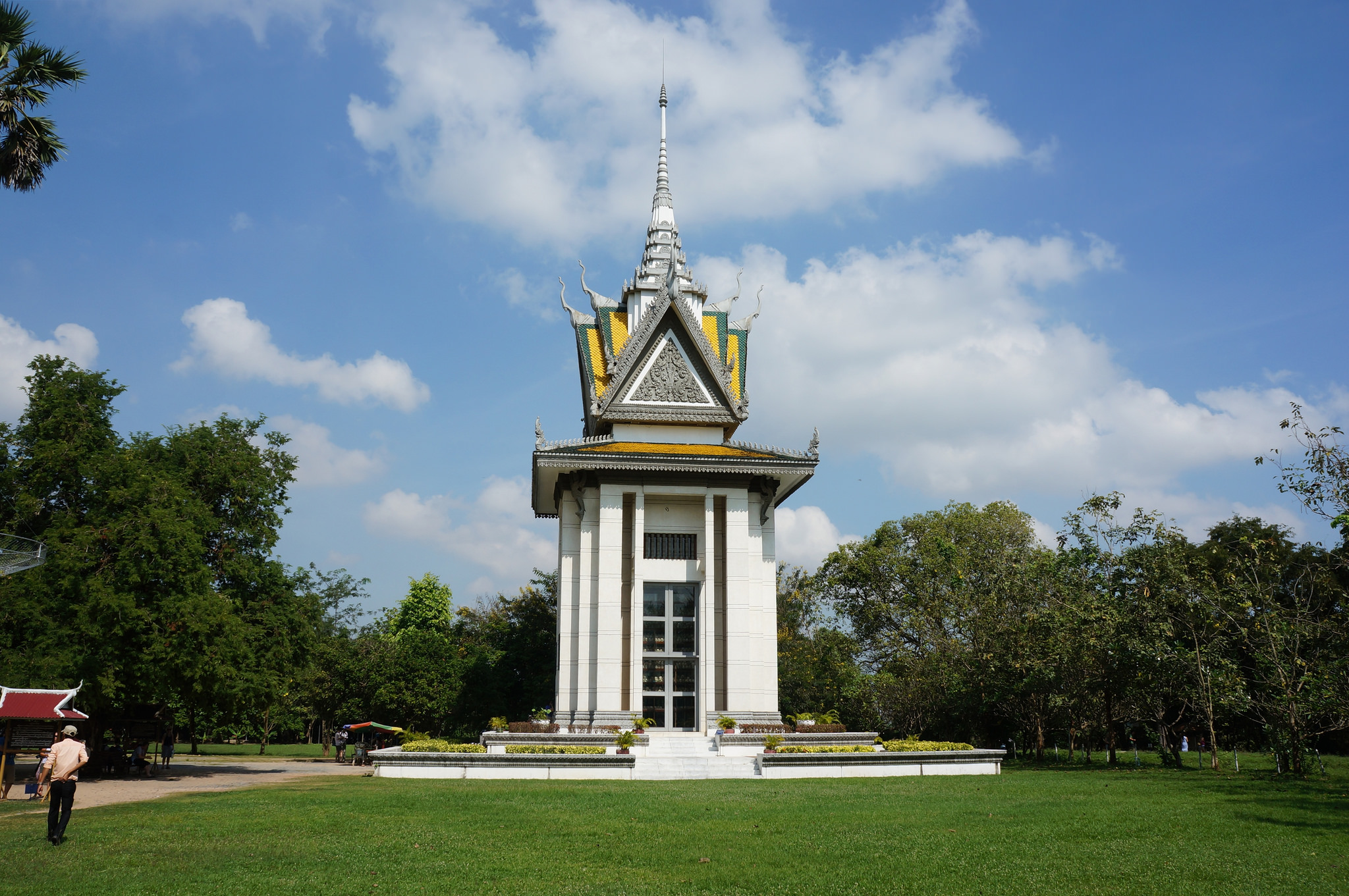
Roughly 95% of the Buddhist temples in Cambodia were destroyed. The Muslim Cham were also decimated, with perhaps 500,000 killed out of a population of 700,000. It was a brutal campaign of purification set not only along racial lines, but social, religious, political, and intellectual lines, as well. Children taken from condemned Cambodians were not exempt from the genocidal campaign either, many being killed in accordance with Khmer Rouge policy, which stated, “There is no gain to keep them, and they might [grow up to] take revenge on you.”
With the early 1979 Vietnamese invasion of Cambodia marking the end of the Khmer Rouge regime, the arduous task of rebuilding the traumatised nation should have commenced. However, even after the overthrow of the Khmer Rouge, a decade of intermittent civil war plagued the country, prolonging the death and devastation of its people and lands. For the weary people of Cambodia, a much longed-for peace was still out of reach.
Paris peace accords and a road to recovery
In October 1991, an agreement was reached in Paris for a political solution to years of armed struggle in Cambodia. The UN sent 22,000 troops to enforce and aid the transition, and in May 1993, a general election was held, the monarchy re-established, and Sihanouk reclaimed the throne as the Cambodian King, holding the position until his abdication in 2004. His son, King Norodom Sihamoni succeeded to the throne and remains the reigning monarch today.
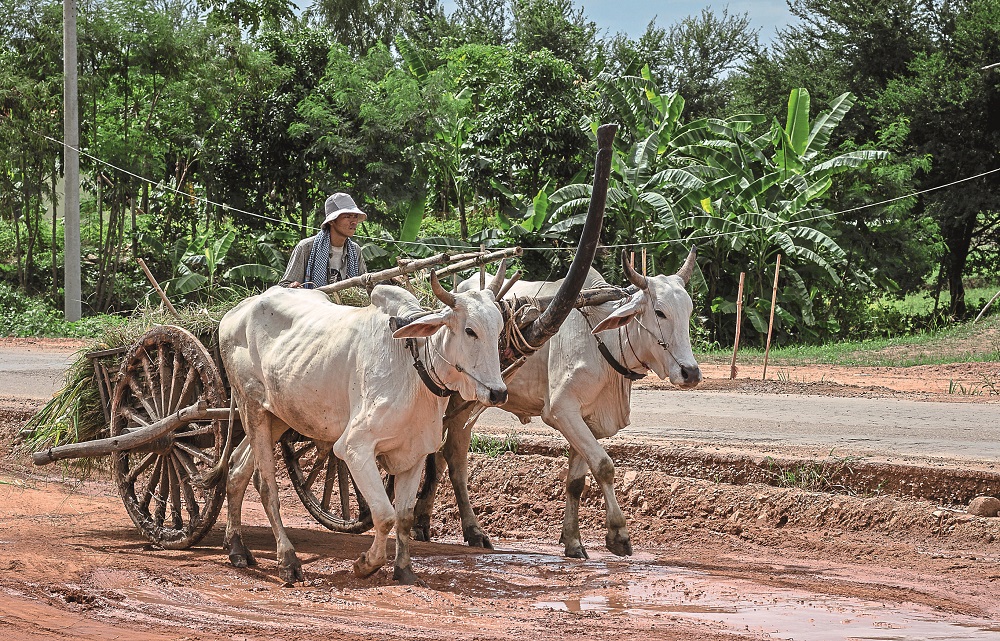
Currently benefiting from two decades of stability, Cambodia is on the track to economic progress, having endured regional wars, colonisation, occupation, civil war, and the murderous rule of the Khmer Rouge. Foreign investment from China and Vietnam, as well as an effort to reduce the dependence on foreign aid assures that the country is on its way to recovery. Tourism, of course, plays a big part, as well, with visits to the country soaring in recent years, pushing tourism to its current position as the country’s second-biggest economic contributor, behind textiles.
Yet despite having one of the world’s most magnificent archaeological treasures right in its backyard, Cambodia’s real wealth is in its people. Struggling and suffering through years of bloodshed, poverty, and political instability with an indefatigable spirit and surprising optimism in the face of such horrors, Cambodians seem to have prevailed with their smiles largely intact.
Surely, few visitors today can leave without a measure of admiration and affection for the people of Cambodia… Asia’s enigmatic, beguiling kingdom of wonder.
Cambodia fact file:
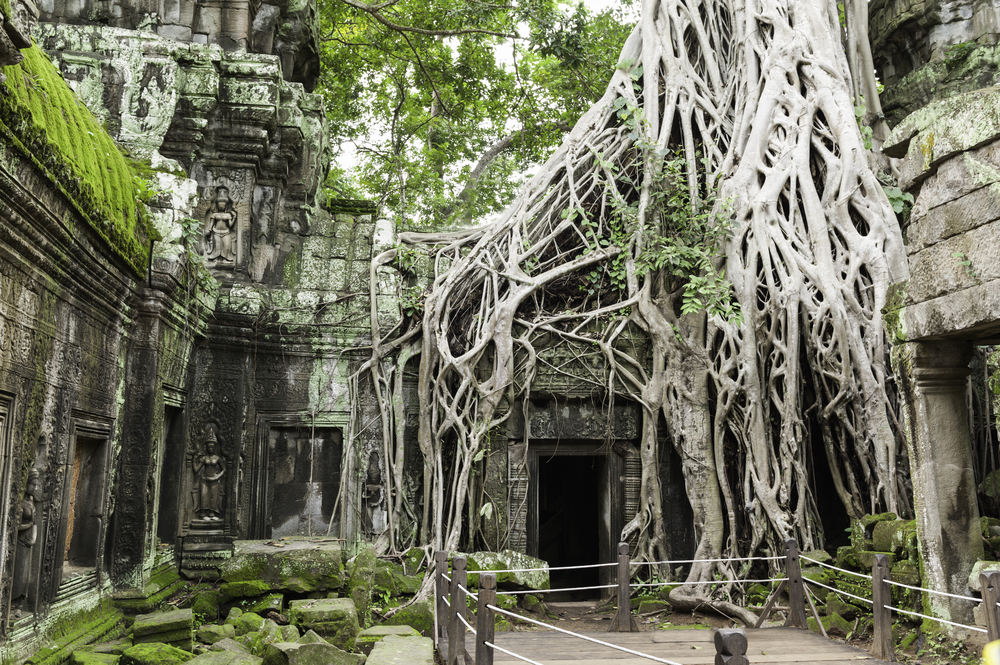
- Size: 181,035 km2 (World rank: 88th)
- Population: 15,458,332 (2014 estimate)
- Capital city: Phnom Penh
- Largest city: Phnom Penh
- Government: Unitary parliamentary constitutional monarchy
- Official language: Khmer
- GDP PPP*: $3,476
- HDI**: 0.555, medium (World rank: 143rd)
- Currency: Cambodian riel (1MYR = 1,000KHR)
*GDP per capita, purchasing power parity, international dollars
**Human Development Index, a comparative measure of life expectancy, literacy, education, standards of living, and quality of life for 188 countries worldwide. (For comparison, Malaysia’s HDI is 0.779, high, and is ranked 62nd.)
Notable facts:
- Cambodia’s name is derived from the ancient Sanskrit word pronounced as “Kambuja.” It is known as Kâmpŭchéa in the Khmer language and is referred to colloquially by Cambodians as Srok Khmer, or “The Land of the Khmers.” Colonised by the French in 1863, Cambodia gained its independence nearly a century later on 9 November 1953. Forty difficult years would then pass before the restoration of the monarchy, beginning Cambodia’s modern era.
- One of Cambodian history’s darkest chapters occurred fairly recently with the rise of the Khmer Rouge in the mid-1970s, immediately following the end of the Cambodian Civil War.
- The communist regime seized power and, led by Pol Pot, was responsible for one of the worst cases of genocide in contemporary history as it sought to eliminate all traces of capitalism and Western influence from society. Estimates of the number of people who died as a result of the regime’s policies before the Khmer Rouge was toppled in 1979 during the Cambodian-Vietnamese War are as high as three million (out of a total population of eight million at the time).
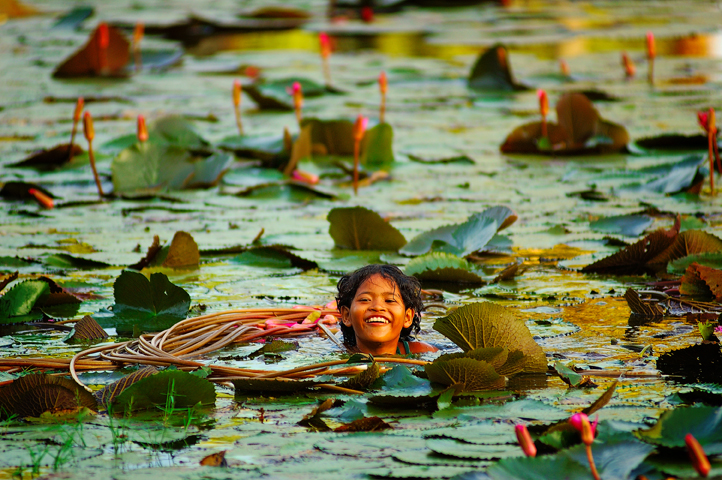
- Since the early 1990s, Cambodia has slowly emerged from the shadow of war and genocide under the provisions of a peace accord initiated in Paris in 1989. Today, the Kingdom of Cambodia bears little resemblance to the war-torn nation of the 1970s and 1980s and tourism has become a strong contributor to the economy, the second greatest source of income in the nation (after textiles).
- Cambodia is home to the largest freshwater lake in ASEAN, the Tonlé Sap, essentially a river-fed alluvial floodplain that is inundated seasonally, dramatically increasing the size of the lake and allowing travel by boat between Phnom Penh and Siem Reap. At its maximum, the Tonlé Sap measures roughly 250km in overall length, with an estimated surface area of some 16,000 sq km. The lake, both vast and relatively shallow, contains a large variety of interconnected ecological regions with a high degree of biodiversity, and was so named as a UNESCO Biosphere Reserve in 1997.
- Cambodia has one of the more homogeneous populations of the ASEAN nations, with some 90% of Cambodians being of Khmer origin and speaking that language. (Theraveda Buddism is the official religion and is practised or recognised by over 95% of the population.) Additionally, as a result of the civil wars and genocide of the 1970s and 1980s, roughly half of Cambodia’s entire population is under 25 years of age today.
This article was originally published in The Expat magazine (September 2016) which is available online or in print via a free subscription.
"ExpatGo welcomes and encourages comments, input, and divergent opinions. However, we kindly request that you use suitable language in your comments, and refrain from any sort of personal attack, hate speech, or disparaging rhetoric. Comments not in line with this are subject to removal from the site. "

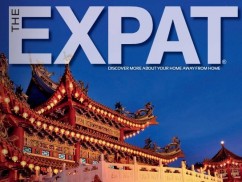
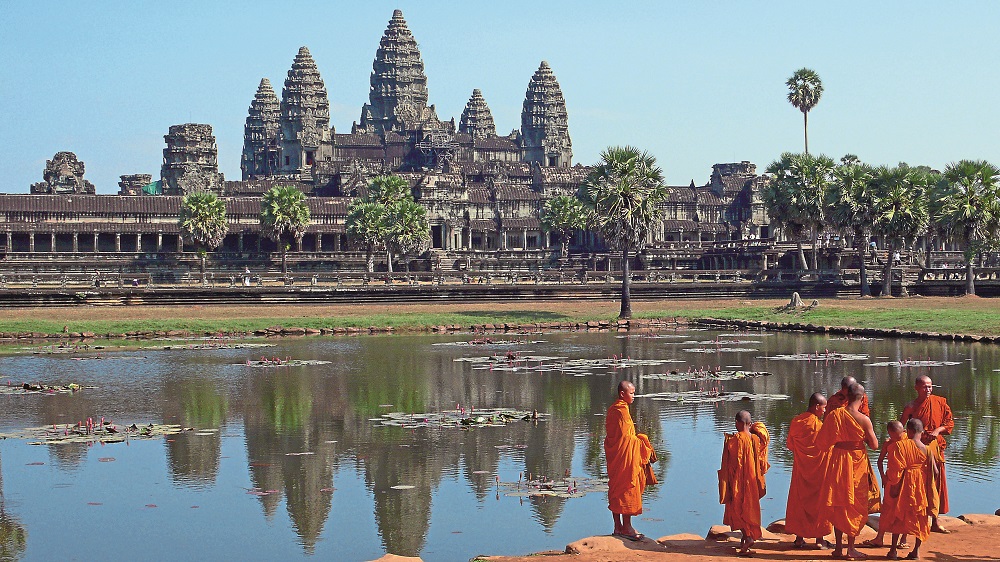



















Pol Pot’s genocide! I call it “Land of Sadness”.
Brian Gi
Julia Farrelly Kelly Johnstone
Christine Teoh